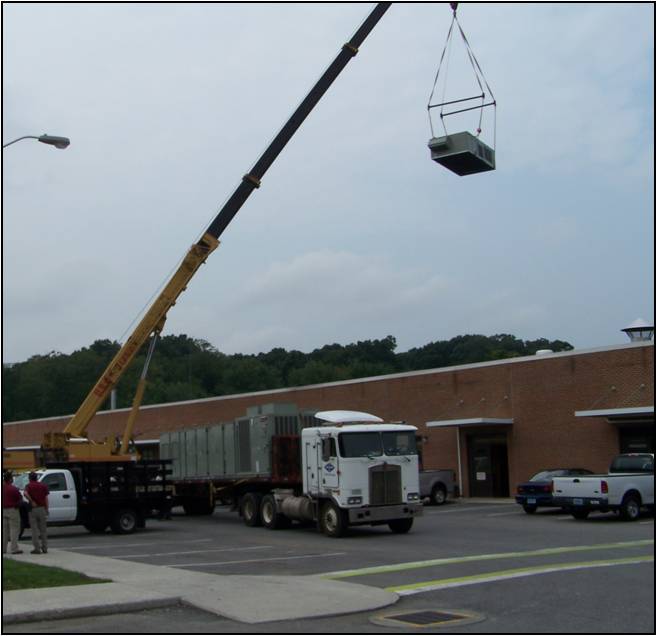Program Summary
OSHA identifies several major causes of crane accidents, which include:
- Boom or crane contact with energized power lines (about 45%)
- Under the hook lifting devices
- Dropped loads
- Boom collapses
- Being crushed by the counter weight
- Outrigger use
- Rigging failures
- Falls
The use of qualified crane operators and proper crane maintenance and inspections are crucial to reducing crane accidents. OSHA updated it's crane standard in 2014 for construction. In addition to OSHA, American National Standards Institute (ANSI) and the American Society of Mechanical Engineers (ASME) provide consensus procedures to provide up-to-date information on crane manufacturing, operational procedures, inspection requirements and operator qualifications.
 Application
Application
This program applies to the use of mobile cranes on Virginia Tech properties. It does not apply to monorails, monorail cranes, top running single girder cranes, or overhead hoists - such equipment is not covered by OSHA 1910.179 for General Industry or 1926.550 for Construction.
Requirements
Contractors who will be operating a mobile crane on Virginia Tech property should coordinate activities with the VT Project Manager/Coordinator to assure required notifications (due to the proximity of the airport) are filed and departmental personnel and/or the public are protected from hazards associated with crane operations in the area.

